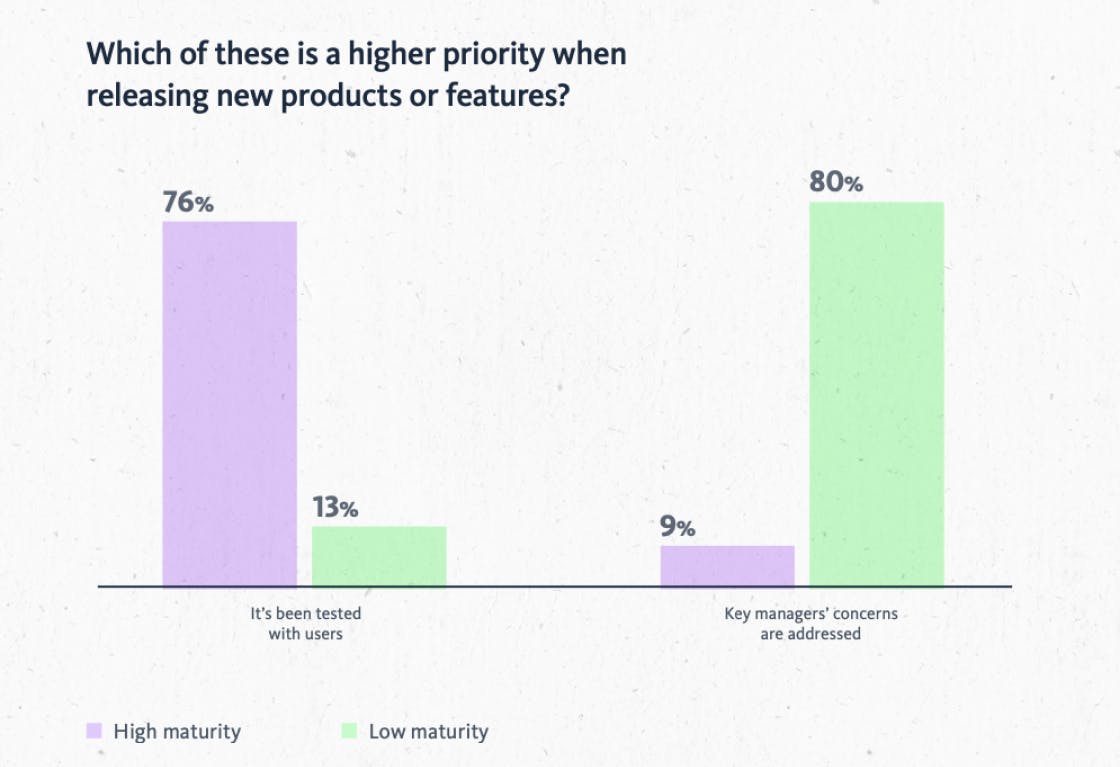Decentralising control - the first key to customer centricity
Commissioned by Google, we recently conducted a large scale study into the customer centric maturity of over 100 high-profile European brands.
Collating our findings, we published our white paper 'The State of Customer Centricity', which reveals groundbreaking insights. We found that customer centric organisations grow faster, have more satisfied employees and are more nimble.
Customer centricity drives business success
Our research found that the 36% of organisations who have a high customer centric maturity grow their revenue 9x faster than competitors due to their ability to retain current customers and attract new ones.
Those that scored highest on our index are also four times more likely to have highly satisfied employees, giving them a clear advantage when trying to attract, and retain, talent.
Finally, customer centric organisations are more agile and faster to adapt. 65% could change business processes within weeks or months whereas low maturity companies would take years.
By investing in customer centricity, organisations are better placed to deal with unforeseen changes to customer expectations, enhance performance and ultimately achieve their business aims.
Five keys to customer centricity
In addition to highlighting the opportunity that being a customer centric organisation brings, we also want to help organisations improve their customer centricity by outlining some of the clear distinctions we found when we looked at what separated high performers from low performers.
In the white paper, you’ll find five key insights from our study that will help you to answer the question: how can we be more customer centric?
Following these surprisingly simple and actionable principles will ensure you develop a high performing, customer centred organisation, fast.
The five keys to customer centricity shared by all high performers are:
- De-centralise control
- Question everything, assume nothing
- Prioritise employee experience
- Adopt a customer centric org chart
- Communicate relentlessly
Key 1: de-centralise control
The first key to customer centricity is all about giving teams autonomy and decentralising control. Our research found that high-performing organisations gave their teams more freedom to make their own choices, balancing top-down and bottom-up decision-making. However, low-performing organisations were strongly skewed towards top-down decision-making.

It is also interesting to note what the data says about how those decisions were split. Strikingly, none of the high-performing organisations rated key managers’ concerns as ‘very high priority’ when making decisions on new products or features. High-performing organisations were far more interested in what customers said; whereas for low-performing organisations, the concerns of key managers were critical to decision making.

We believe decentralising control has two main advantages. Firstly, decisions get made faster as you don’t need to wait for approval to be passed up and down the chain of command. We think this is one reason for the agility of high-performing organisations and the speed they can make changes.
Secondly, decisions are made by people working in close proximity to the customer, and those who spend more time analysing and understanding user research. This means that the decisions made are of better quality, as they are more likely to take into account the overall impact on the customer.
Organisations with de-centralised decision making processes are able to operate in this way by ensuring that they have the right structures in place to do so, teams are aligned with business strategy and that their mission - to deliver value to customers- is clearly communicated. This allows managers to be sure that their teams are doing the right thing and can therefore provide them with the autonomy needed to make effective decisions themselves.
Download the white paper now to read more about how decentralising control, combined with the other keys to customer centricity, can help your organisation to increase revenue growth, enhance employee satisfaction and become more agile.

